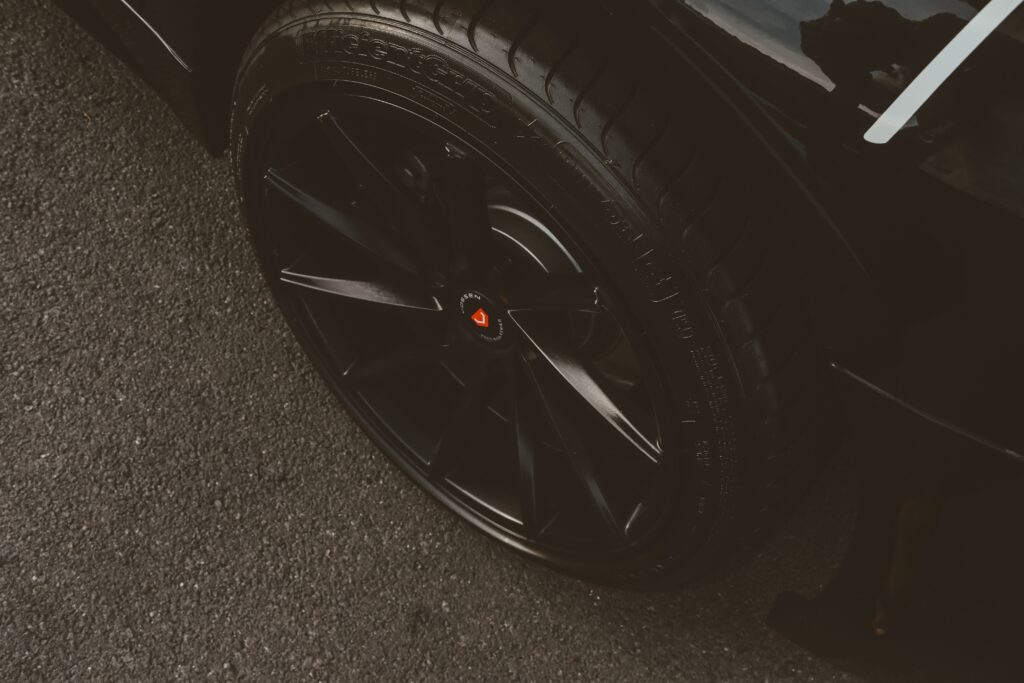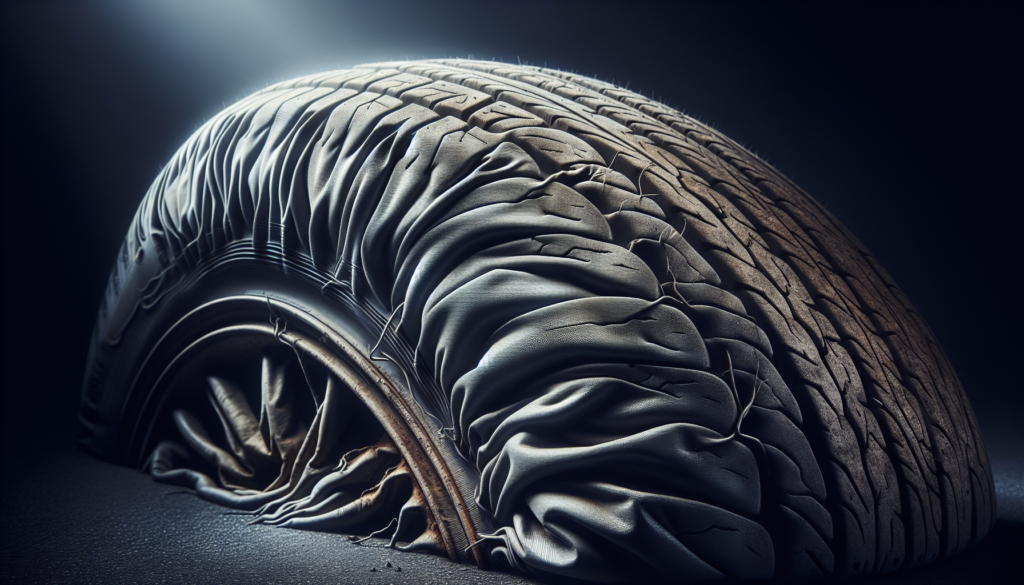Maintaining proper tire pressure is not only crucial for your vehicle’s performance and fuel efficiency but can also have a significant impact on its overall lifespan. When the tire pressure is consistently low, it puts extra strain on the tire’s structure, leading to increased wear and tear. This can result in a shorter lifespan for your tires, affecting not just your wallet but also the safety and longevity of your vehicle. By understanding the importance of maintaining optimal tire pressure, you can ensure a smoother and longer-lasting ride for your beloved vehicle.
Effects of Low Tire Pressure
Decreased Fuel Efficiency
Having low tire pressure can significantly impact the fuel efficiency of your vehicle. When your tires are underinflated, more of the tire surface comes in contact with the road, causing increased rolling resistance. This resistance requires the engine to work harder, resulting in reduced fuel efficiency. By simply keeping your tires properly inflated, you can improve your vehicle’s gas mileage and save money at the pump.
Reduced Traction and Handling
Low tire pressure also affects the traction and handling of your vehicle. When tires are not inflated to the manufacturer’s recommended pressure, it can result in poor grip on the road surface. This can be particularly dangerous during wet or icy conditions, as the tires have less contact with the road and are more prone to skidding or slipping. Maintaining proper tire pressure will help ensure optimal traction and handling, enhancing your safety while driving.
Uneven Tire Wear
Another consequence of low tire pressure is uneven tire wear. When tires are underinflated, the outer edges of the tire tread tend to wear out faster than the center. This uneven tread wear can lead to the need for premature tire replacement, costing you more money in the long run. Regularly checking and maintaining the proper tire pressure will help to extend the lifespan of your tires and promote even wear.
Increased Risk of Tire Failure
Driving with low tire pressure significantly increases the risk of tire failure. Underinflated tires are more susceptible to blowouts, tread separation, and other tire-related issues. Such failures can occur suddenly and unexpectedly, causing loss of control over the vehicle and potentially resulting in accidents or collisions. By ensuring your tires are properly inflated, you can minimize the risk of tire failure and ensure the safety of yourself and your passengers.
Impact on Suspension
Strain on Suspension Components
Low tire pressure can also put strain on the suspension components of your vehicle. When the tires are not properly inflated, it affects the overall height and position of the vehicle. This can lead to increased stress on the suspension system, including the shocks, struts, and other related components. Over time, this added strain can cause premature wear and damage to the suspension, resulting in a rougher and less comfortable ride. Maintaining the correct tire pressure will help to alleviate this strain and preserve the health of your suspension system.

Effect on Braking
Extended Stopping Distance
Maintaining proper tire pressure is crucial for optimal braking performance. When your tires are underinflated, it takes longer for the vehicle to come to a complete stop. The increased rolling resistance from low tire pressure means it requires more force to slow down or stop the vehicle. This extended stopping distance can be the difference between avoiding a collision and being involved in one. By regularly checking and maintaining the proper tire pressure, you can help ensure that your brakes are operating at their best.
Increased Brake Wear
In addition to extended stopping distances, low tire pressure can also lead to increased wear on your vehicle’s brakes. When the tires are not properly inflated, the additional strain on the braking system results in more frequent and excessive use of the brakes. This extra wear and tear can lead to premature brake pad and rotor deterioration, requiring more frequent replacements and costly repairs. By keeping your tires inflated to the recommended pressure, you can minimize the wear on your brakes and extend their lifespan.
Impact on Steering
Reduced Responsiveness
Low tire pressure can negatively affect the responsiveness of your vehicle’s steering. Underinflated tires can feel sluggish and unresponsive, making it more difficult to control the direction of your vehicle. This diminished steering responsiveness could be particularly dangerous in emergency situations where quick maneuvering is required. By maintaining proper tire pressure, you can ensure that your steering remains sharp and precise, promoting safe and reliable handling.
Increased Stress on Steering Components
Similar to the strain on the suspension system, low tire pressure also puts added stress on the steering components of your vehicle. When the tires are not properly inflated, it affects the overall alignment and position of the vehicle, causing the steering system to work harder. This increased stress can lead to premature wear and damage to vital steering components, such as the steering rack and tie rods. Regularly checking and maintaining the proper tire pressure will help alleviate this added stress and prolong the lifespan of your steering system.

Effect on Alignment
Misalignment Issues
Low tire pressure can contribute to alignment issues in your vehicle. When tires are underinflated, it can cause uneven wear on the tread and alter the angle at which the tires contact the road. This misalignment can result in the vehicle pulling to one side, causing uneven tire wear, steering difficulties, and compromised handling. To prevent misalignment, it is essential to keep your tires properly inflated and regularly check the alignment to ensure optimal performance and safety.
Consequences for Vehicle’s Frame
Damage to Frame
Driving with consistently low tire pressure can potentially lead to damage to your vehicle’s frame. When tires are underinflated, the vehicle’s weight is distributed unevenly, placing excess stress on certain areas of the frame. Over time, this stress can cause structural damage, leading to issues with the integrity and stability of the vehicle. By maintaining the proper tire pressure, you can help prevent unnecessary damage to your vehicle’s frame and maintain its overall longevity.

Impact on Exhaust System
Extra Strain on Exhaust System
Low tire pressure can indirectly impact your vehicle’s exhaust system. Underinflated tires can result in reduced ground clearance, causing the vehicle’s undercarriage to scrape against the road surface more frequently. This scraping puts additional strain on the exhaust system, increasing the risk of damage to pipes, mufflers, or other components. Regularly checking and maintaining proper tire pressure can help prevent this extra strain on your vehicle’s exhaust system and avoid costly repairs.
Effect on Transmission
Increased Transmission Wear
Low tire pressure can also have an impact on your vehicle’s transmission. When tires are underinflated, the engine has to work harder to overcome the increased rolling resistance, putting more strain on the transmission. This additional strain can lead to accelerated wear and potential damage to the transmission components. By keeping your tires properly inflated, you can reduce the strain on your vehicle’s transmission, promoting smoother gear shifts and prolonging its lifespan.

Contributing Factors to Low Tire Pressure
Weather Conditions
Various weather conditions can contribute to low tire pressure. Cold weather, in particular, can cause a significant drop in tire pressure. As temperatures decrease, the air molecules inside the tire contract, leading to reduced pressure. It is important to monitor your tire pressure more frequently during cold weather and adjust accordingly to maintain the recommended inflation level.
Tire Age and Condition
The age and condition of your tires can also contribute to low tire pressure. Over time, tires naturally lose air due to small leaks or gradual permeation through the rubber. Aging tires may also develop cracks or other forms of damage, making them more prone to air loss. Regularly inspecting your tires for signs of wear and tear, and replacing them when necessary, can help prevent low tire pressure caused by tire aging and deterioration.
Lack of Routine Maintenance
One of the most common contributing factors to low tire pressure is a lack of routine maintenance. Many vehicle owners fail to regularly check their tire pressure, resulting in gradual air loss and underinflated tires. It is important to incorporate tire pressure checks into your regular vehicle maintenance routine. By doing so, you can catch any low pressure issues early and ensure the optimal performance and lifespan of your tires.
Preventing Low Tire Pressure
Regular Tire Pressure Checks
To prevent low tire pressure and its associated effects, it is crucial to conduct regular tire pressure checks. Using a tire pressure gauge, measure the pressure of each tire at least once a month or before long trips. Refer to your vehicle’s owner manual or the sticker located on the driver’s side door jamb for the manufacturer’s recommended tire pressure. Adjust the pressure as needed to ensure all tires are properly inflated.
Proper Inflation Practices
When inflating your tires, ensure that you are using a reliable and accurate tire pressure gauge. Overinflating or underinflating your tires can lead to various issues. Inflating them to the correct pressure will maximize fuel efficiency, improve traction, and promote even tire wear. Remember to check your tire pressure when the tires are cool, as driving can increase internal tire temperature and give you false readings.
Monitoring Tire Health
Regularly monitoring the health of your tires is essential for preventing low tire pressure. Inspect the tires for any signs of damage, such as cuts, bulges, or punctures. Check the tread depth and look for uneven tread wear, as these can indicate underlying issues. Additionally, ensure that your tires are rotated regularly to promote even wear. By maintaining healthy tires, you can minimize the risk of low tire pressure and prolong their overall lifespan.
By understanding the effects of low tire pressure and taking the necessary preventive measures, you can ensure the longevity and performance of your vehicle. Proper tire inflation, regular maintenance, and monitoring of tire health are simple yet effective ways to prevent the negative consequences associated with low tire pressure. By prioritizing the health of your tires, you can improve fuel efficiency, enhance safety, prolong the lifespan of other vehicle components, and ultimately enjoy a smoother and more reliable driving experience.


